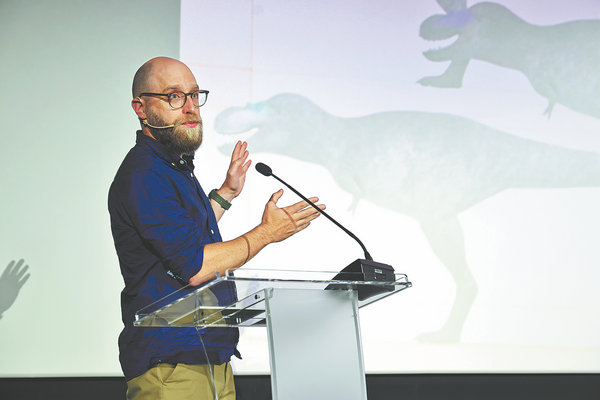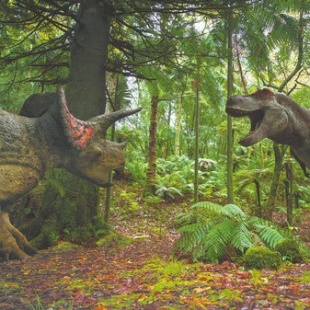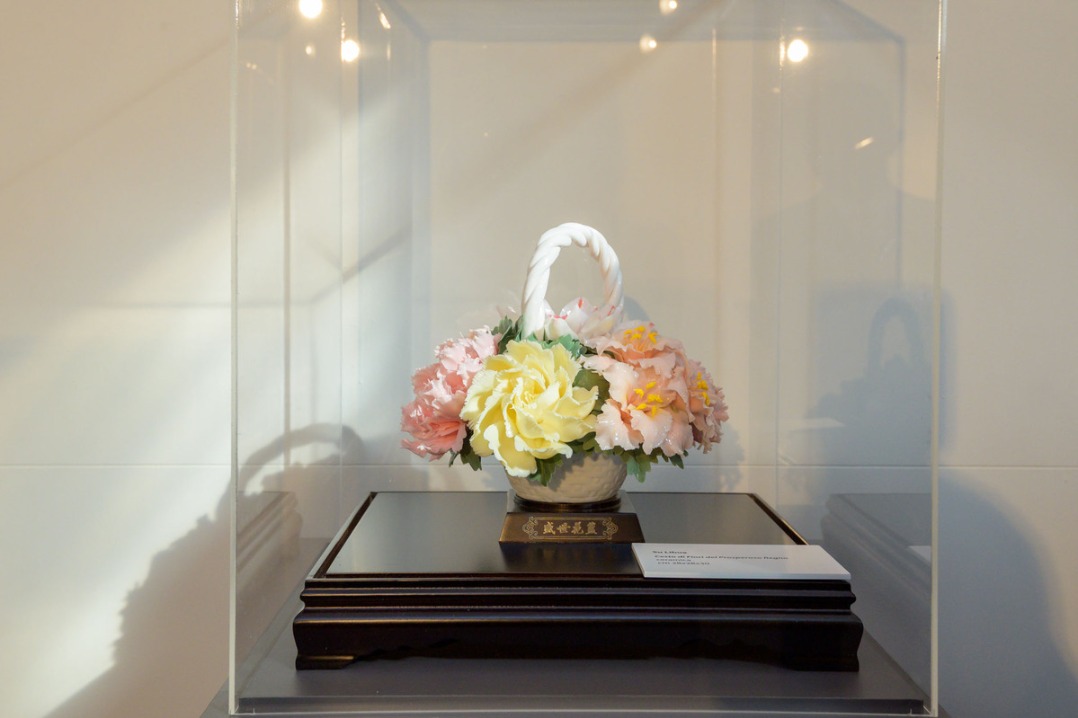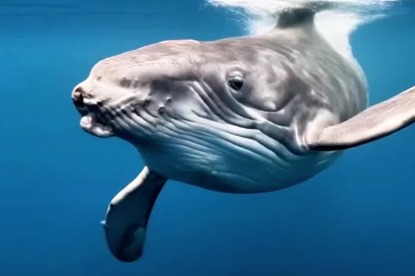Back with dinosaurs
New series incorporates scientific findings of past two decades to give BBC's iconic TV show a fresh look, Xu Fan reports.


"That wasn't the biggest challenge. The real challenge was going through airport security with all that gear — trying to explain it was just … awkward," Scott says with a laugh.
In addition, the crew had to re-create dinosaur sounds. Since crocodiles and birds are the closest living relatives of dinosaurs, they recorded a wide range of sounds from these animals in various habitats and states — including when they were angry, happy, hunting, or sleeping — and combined them to simulate the calls of dinosaurs heard in the program.
In one episode, to accurately depict the Spinosaurus interacting with water, the team commissioned a 3D-printed model of its head — nearly 2 meters long and weighing 8 kilograms — which they submerged and maneuvered in a river. The director even donned a wet suit to help guide the prop through the water.
Xing Lida, an associate professor at the China University of Geosciences (Beijing) — who first watched the 1999 Walking with Dinosaurs as a middle-school student — points out that humanity has only known about dinosaurs for about 200 years, despite their 160-million-year reign on Earth.





































